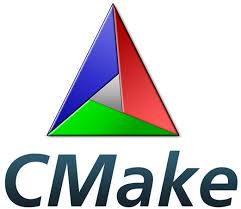How To Install CMake on Fedora 41

CMake is an essential tool for developers, providing a powerful way to manage the build process of software projects. It helps in generating build files for various platforms, making it easier to compile and link code efficiently. If you are using Fedora 41 and want to install CMake, this guide will walk you through the process step-by-step. By the end of this article, you will have a thorough understanding of how to install CMake using different methods, troubleshoot common issues, and verify your installation.
Understanding CMake
CMake is an open-source cross-platform tool designed to manage the build process of software using simple platform and compiler-independent configuration files. It generates native makefiles and workspaces that can be used in the compiler environment of your choice. CMake is widely used in the software development community due to its flexibility and ability to support complex build processes.
One of the primary advantages of CMake is its ability to handle large projects with multiple dependencies. It allows developers to define their project structure in a straightforward manner, making it easier to maintain and update over time. Additionally, CMake integrates well with various IDEs (Integrated Development Environments), enhancing productivity for developers.
Prerequisites for Installing CMake on Fedora 41
Before installing CMake on Fedora 41, ensure that your system meets the following prerequisites:
- Operating System: Fedora 41 must be installed and running on your machine.
- Package Manager: Familiarity with DNF (Dandified YUM), Fedora’s default package manager.
- Basic Command Line Knowledge: Comfort with using the terminal for executing commands.
Additionally, make sure your system is updated by running:
sudo dnf updateMethods to Install CMake on Fedora 41
Method 1: Installing via DNF
The simplest way to install CMake on Fedora 41 is by using the DNF package manager. This method ensures that you get a stable version of CMake that is compatible with your system.
You can access the terminal by searching for “Terminal” in your applications menu or by pressing Ctrl + Alt + T.
Before installing any new software, it’s good practice to update your system packages. Run the following command:
sudo dnf updateTo install CMake, execute the following command:
sudo dnf install cmakeAfter installation, check if CMake was installed successfully by running:
cmake --versionYou should see output displaying the installed version of CMake.
Method 2: Installing from Snap Packages
If you prefer using Snap packages, you can install CMake through Snapd. Snap provides a way to package applications with all their dependencies, ensuring they run consistently across different Linux distributions.
If Snapd is not already installed on your system, you can install it by running:
sudo dnf install snapdAfter installing Snapd, enable its service with the following command:
sudo systemctl enable --now snapd.socketTo enable classic snap support, create a symbolic link with this command:
sudoln -s /var/lib/snapd/snap /snapNow you can install CMake using Snap by executing:
sudo snap install cmake --classicSimilar to the DNF method, check if CMake was installed correctly by running:
cmake --versionMethod 3: Building from Source
If you need a specific version of CMake or want to customize your installation, building from source is an excellent option. This method requires more steps but offers greater flexibility.
Before building from source, ensure you have the necessary development tools installed. Run this command to install them:
sudo dnf groupinstall "Development Tools"Visit the official CMake website and download the latest source code tarball or use wget as follows:
wget https://github.com/Kitware/CMake/releases/download/v3.30.5/cmake-3.30.5.tar.gzExtract the downloaded tarball using tar:
tar -zxvf cmake-.tar.gzChange into the extracted directory:
cd cmake-It’s a good practice to create a separate build directory. Run these commands:
mkdir build
cd build
cmake ..Now compile and install CMake with these commands:
make
sudo make installCommon Issues and Troubleshooting
You may encounter some issues during installation or when trying to run CMake. Here are some common problems and their solutions:
- CMake command not found: If you receive an error stating that ‘cmake’ is not found after installation, ensure that your PATH variable includes the directory where CMake was installed. You can check this by running:
$ echo $PATH - Error during installation from source: If you face errors while building from source, verify that all required dependencies are installed. Refer back to the prerequisite section for necessary packages.
- CMake fails to find dependencies: If you’re working on a project that requires specific libraries or packages, ensure they are installed before running cmake commands in your project directory.
Verifying the Installation
cmake --versionThis command should return information about the installed version of CMake along with copyright details.
Congratulations! You have successfully installed CMake. Thanks for using this tutorial for installing the CMake on Fedora 41 system. For additional help or useful information, we recommend you check the CMake website.